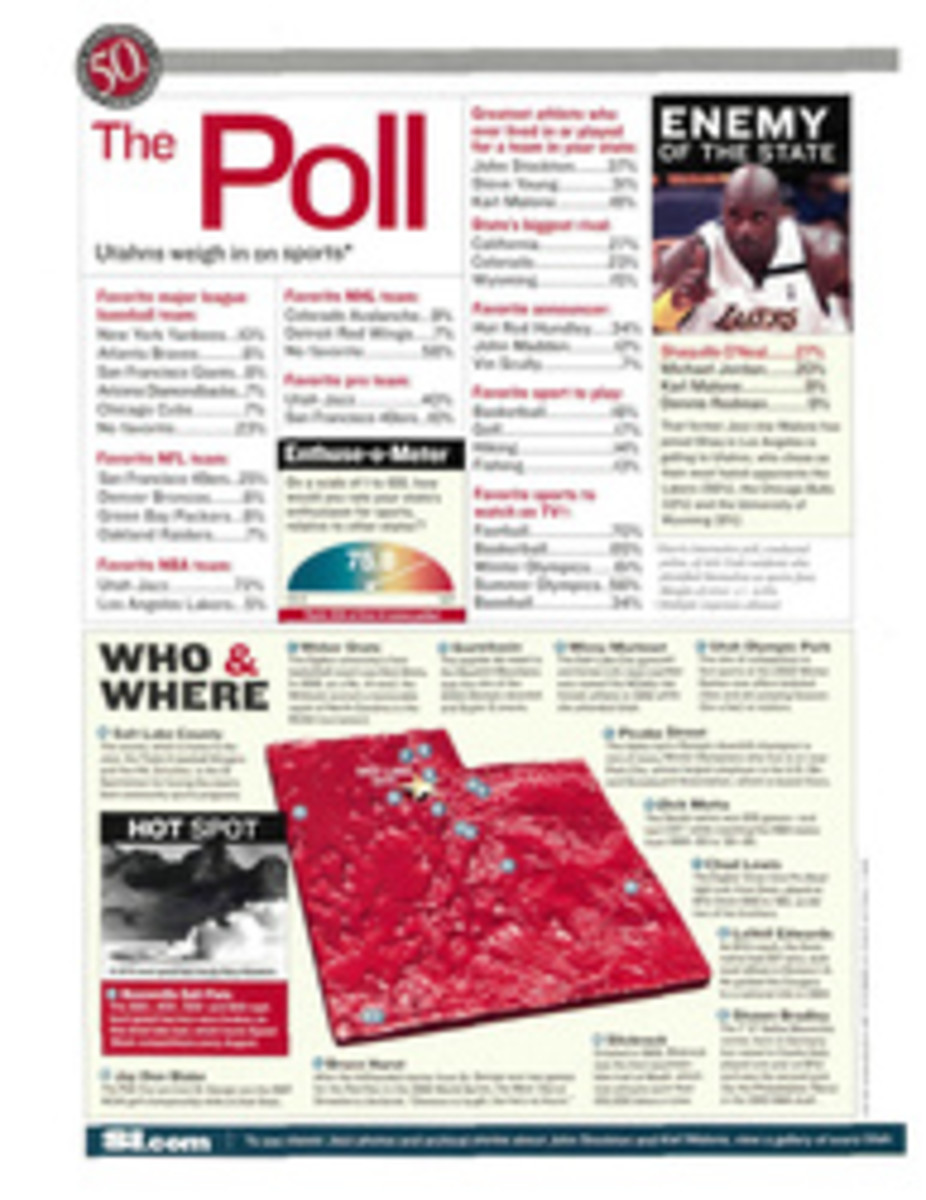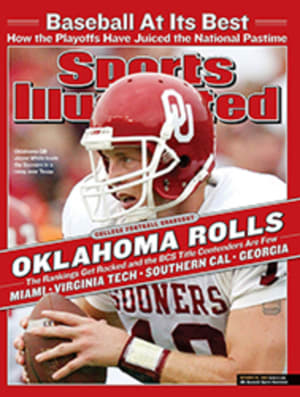
Big Game This naturalist's binoculars moved from deer to hawks to Karl Malone
In the state of Utah, I would wager, the sports enthusiast's tool
of choice within most households is a pair of binoculars. That is
certainly the case in my family. ¶ My father keeps his pair on
the windowsill of his kitchen, where he can quickly pick them up
to watch deer. A hunter in his youth, he has never lost his
hunter's eyes. He passed them on to my three brothers and me. We
grew up in the foothills of the Wasatch Mountains in Salt Lake
City. Deer were our neighbors. When we were children, my father
taught us how to look for wildlife: a flick of a tail, a twitch
of an ear, a bent leg that broke the symmetry of the woods. He
shared his binoculars with us until we were old enough to have
earned our own. ¶ I received my first pair when I was 14, about
the age at which boys in my family received their first rifles. My
eyes did not search the hillsides for deer, as my brothers' did;
they scanned the sky for birds. I pored over the colored plates
in Roger Tory Peterson's A Field Guide to Western Birds,
memorizing plumages and profiles.
Utah's Great Basin, a sea of sage, is a birdwatcher's paradise.
The wetlands surrounding the Great Salt Lake shimmer like
emeralds and provide a migration stop for millions of weary
shorebirds, ducks and geese along the eastern edge of the Pacific
Flyway. It was on outings here and elsewhere that my grandmother
taught me to pay attention to the nuances of flight patterns and
behavior. Such discriminating details brought me into a
participatory relationship with nature. Wherever I went, my
binoculars went with me.
This included trips to Utah Jazz games. My skills as a naturalist
translated nicely from the wild to the Delta Center. Karl Malone
became my object of focus. The beauty of his body, the way he
would push and power his way under the basket until he shot the
ball over his shoulder with one hand and scored was as compelling
to me as watching the focused intensity of a great blue heron
fishing. Both man and bird filled their designated niches with
grace and beauty.
I will admit to wandering eyes. Just as my binocs would scan a
meadow for wildlife, they would stray from the court into the
crowd. When John Stockton stole the ball and fed it to Malone on
the break or when they ran their famous pick-and-roll, I would
flash my field glasses to Mrs. Stockton for her reaction, knowing
she always sat just up and to the left of the team with her brood
of young children perfectly dressed.
From the Stockton row I would quickly move my binocs down and to
the left to the Mmes. Malone: Karl's wife and mother sitting just
above the exit sign that marks the tunnel to the Jazz locker
room. It was here that I could gauge whether or not the team was
in trouble.
Throughout the game I would browse the crowd for
celebrities--rare, exotic species such as Leonardo DiCaprio and
Madonna who occasionally appeared in the first rows, closest to
the court. In ecology this area is called the ecotone, the
shadowed edge where the forest gives way to the field, the
shoreline to the sea. This is where the greatest activity and
diversity of species are usually found.
Once during a playoff game I put my binoculars down and cupped my
hands behind my ears as 20,000 fans cheered. Their cries became
those of sandhill cranes and snow geese during the spring
migration as they heralded their return to the Platte River in
Nebraska, a victory of another sort.
But among the big-game species that my binoculars have beheld,
only a grizzly's gaze can compete with the hunger I saw in
Michael Jordan's eyes when he stole the ball from Malone and
launched the shot that robbed the Jazz of the 1998 NBA
championship. With my second eyes I caught a glimpse of what
survival of the fittest really means.
Field glasses offer spectators the intimacy of a framed moment,
finely focused. We become participants. Whether I am in Utah's
marshlands or in its arenas, I can look through my binoculars and
be transported into a world of beauty and perfection. "And I
feel," as the poet Louise Gluck writes, "sometimes, part of
something/very great, wholly profound and sweeping."
Terry Tempest Williams is a renowned naturalist whose most recent
book is Red: Passion and Patience in the Desert.
COLOR ILLUSTRATION: ILLUSTRATION BY JOE CIARDIELLO

